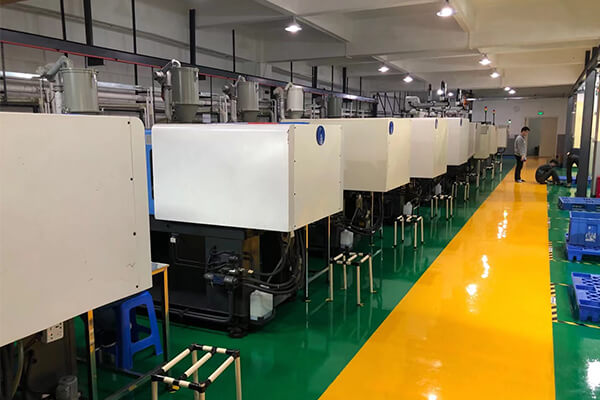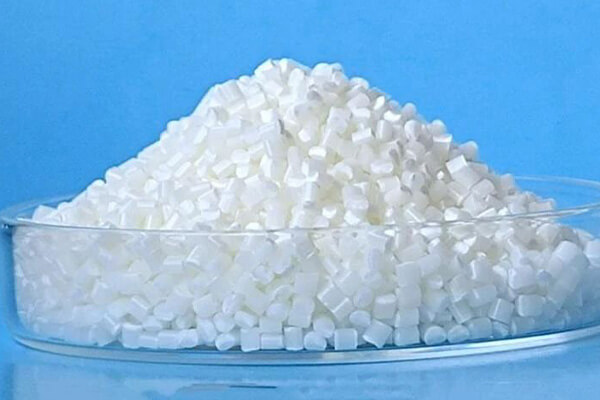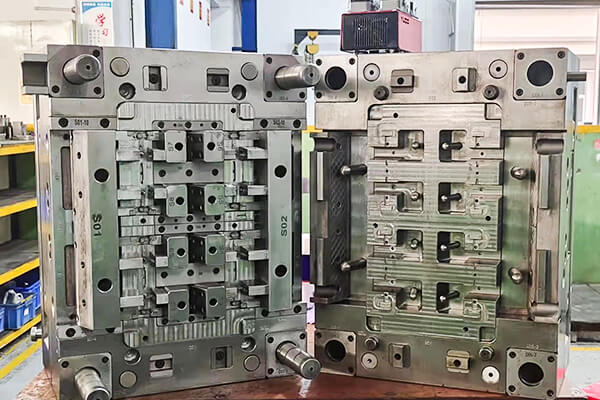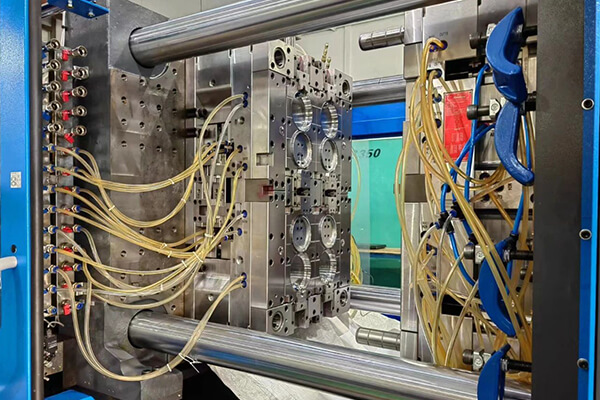Mastering ABS Injection Molding: Your Comprehensive How-To Guide
ABS injection molding has many advantages, such as high precision manufacturing process, high production efficiency, low cost, smooth product surface, high hardness, good chemical resistance, etc. As such, it has a wide range of applications in manufacturing, including electronics, automobiles, medical equipment, home appliances, toys, and many more. Plastic decorative parts that require electroplating in the manufacture of plastic products are generally made of ABS plastic.
Especially in the automotive industry, ABS injection molding is very important. ABS material has good impact resistance and heat resistance, so it can be used in automobile manufacturing to make body parts, interior parts, instrument panels and so on. In addition, ABS materials can also be adjusted by color to achieve different colors of car appearance.
ABS raw material
Characteristics of ABS material
ABS generally has a melting point of approximately 170°C and a decomposition temperature of 260°C. The temperature range for injection molding is relatively wide, with a recommended temperature range of 180-240°C. However, because ABS contains rubber components, it has a tendency to absorb moisture and must be dried during production at temperatures of 80-90°C for 1-2 hours. The presence of rubber components also makes ABS less thermally stable and more prone to decomposition, so the raw materials should not be left in the barrel for extended periods during injection molding. Although ABS has a higher melt viscosity than PS, its gate and runner are average and can still be used for filling products. However, ABS products are susceptible to static electricity and dust accumulation on their surfaces. The shrinkage rate of ABS is 5‰, and the overflow value is 0.05mm.
Types of ABS material
ABS is a terpolymer composed of acrylonitrile, butadiene, and styrene monomers that are copolymerized to form the material. Depending on the proportions of these three monomers, ABS can exhibit varying properties and melting temperatures. Blending ABS with other plastics or additives allows for the creation of ABS variants with specific properties and applications. These variations can include impact resistance, heat resistance, flame retardancy, transparency, reinforcement, electroplating capabilities, and more.
- General-purpose ABS: The most common ABS material, used to manufacture various mechanical parts, electrical casings, toys, household items, etc.
- Glass fiber-reinforced ABS: Glass fiber is added on the basis of general-purpose ABS, which improves the strength, hardness and rigidity of the material, and is widely used in auto parts, home appliance parts, electrical casings, etc.
- Flame retardant ABS: Flame retardant is added on the basis of general ABS, which has good flame retardant performance and is widely used in electrical appliances, instruments, aerospace and other fields.
- Transparent ABS: Adding optical-grade resin on the basis of general-purpose ABS can be made into transparent ABS products, which are widely used in automobile lampshades, LED lamp tubes, mobile phone casings, etc.
- Electroplating grade ABS: Adding special additives on the basis of general ABS can make ABS material with smooth surface and suitable for electroplating, which is widely used in electronic product casings, furniture metal parts, etc.
Advantages and disadvantages of ABS material
ABS (Acrylonitrile-Butadiene-Styrene) is a commonly used engineering plastic, which has good strength, hardness, toughness and durability, and is easy to process and shape.
- The advantages of ABS:
Good Strength and Toughness: ABS has high tensile strength, elastic modulus, and impact toughness, making it useful in the manufacture of high-strength and high-toughness parts.
Good heat resistance: ABS has good heat resistance, and it is not easy to deform and change color when used in a temperature range.
Easy to process: ABS is a versatile material that can be processed using various methods, including injection molding, extrusion molding, and compression molding, among others. The molding process is simple and easy to control.
Good chemical resistance: ABS has good corrosion resistance to a variety of chemical substances and can withstand the erosion of many acids, alkalis and organic substances. - The shortcoming of ABS:
Susceptible to ultraviolet rays: ABS has poor ultraviolet resistance and is prone to yellowing and brittleness when exposed to sunlight for a long time.
Large specific gravity: ABS has a large specific gravity, which is heavier than other plastics.
Strong opacity: ABS itself has strong opacity and cannot be made into transparent products.
Easily affected by brittle agents: ABS contains styrene components, which are easily affected by brittle agents, making its performance decline, especially at low temperatures, prone to brittle fracture.
To sum up, the advantages of ABS material are strength, heat resistance, processability and chemical resistance, etc. The disadvantages are that it is easily affected by ultraviolet light, has a large specific weight, strong opacity, and is easily affected by brittle agents.
ABS injection molding process
Selection of ABS materials
To select suitable ABS materials for plastic products, its strength, stiffness, heat resistance, chemical resistance and other aspects need to be considered. It is also necessary to make a trade-off based on factors such as the required processing method and cost. It is recommended to choose through various methods such as material data sheets, manufacturer’s suggestions, and actual tests.
Selecting the injection molding machine
It involves considering optional standard machines with a screw length-to-diameter ratio of 20:1, a compression ratio greater than 2, and injection pressure greater than 150MPa. If using a color masterbatch or requiring a high product appearance, a smaller diameter screw may be chosen. Clamping force should be determined based on the plastic grade and product requirements, typically falling within the range of 4700 to 6200 tons per square meter. The mold is a critical component of the injection molding process.
Injection Mold Design
The injection mold is one of the most important parts of the injection molding process. Mold designers must consider the size, shape, material and other factors of the product to ensure that the product produced meets the specifications. In addition, the mold design must also consider how to vent, and how to avoid warping, shrinkage and other defects.
Mold preparation
Preparing the mold is a term used to describe the process of getting the mold ready for injection molding. First of all, it is necessary to check whether the mold is intact and free of defects such as cracks and dents. Then, the mold must be heated to ensure that the plastic can flow and fill the entire mold. Finally, the mold must be sprayed or coated to prevent sticking or other problems.
Injection mold temperature
ABS requires a relatively high molding temperature, and correspondingly, the mold temperature should also be set at a high level. Typically, the mold temperature is adjusted to fall within the range of 75-85°C. When manufacturing parts with a large projected area, the fixed mold temperature needs to be around 70-80°C, while the moving mold temperature should be set between 50-60°C. For thin-walled parts, special heating of the mold should be considered. To reduce the production cycle and achieve a stable mold temperature, cold water baths, hot water baths, or other mechanical methods can be employed to compensate for the original cooling time in the cavity after the parts are ejected.
Injection molding process
The ABS molding process involves injecting ABS plastic material into a mold. In the injection molding process, plastic material is first placed in an injection molding machine and then melted by heating. An injection molding machine then injects the plastic into the mold, applying enough pressure to ensure the plastic fills the entire mold. The injection molding process also includes steps such as cooling, mold opening and demoulding.
Drying of ABS plastic
ABS plastic has hygroscopic properties and is susceptible to moisture. To prevent the formation of bubbles and silver threads on the product surface due to water vapor, as well as reduce surface staining and moiré, it is essential to fully dry and preheat the material before processing. This process also aids in plasticization of the plastic. To achieve optimal results, it is important to maintain the moisture content of ABS raw materials at or below 0.13%. The drying conditions before injection molding are: dry at 75-80°C for 2-3 hours in dry season or winter, and dry at 80-90°C for 4-8 hours in summer rainy days. The time is longer, up to 8 ~ 16h. The issue of fog spots on workpieces due to trace amounts of water vapor is frequently neglected. To prevent the reabsorption of moisture by the dried ABS in the hopper, it’s advisable to convert the machine’s hopper into a hot air hopper dryer. However, it’s crucial to monitor humidity levels closely to prevent material overheating during unexpected production interruptions. The use of recycled materials must be limited to a maximum of 30%, and electroplating grade ABS must not incorporate any recycled materials.
Injection temperature
ABS plastics have a unique relationship between temperature and melt viscosity, which distinguishes them from other amorphous plastics. As the temperature increases during the melting process, ABS experiences minimal decrease in its melting point. Once it reaches its plasticizing temperature (usually between 220-250°C), further temperature increase can lead to low heat resistance, as well as thermal degradation which increases melt viscosity, making injection molding more challenging and reducing the mechanical properties of the parts. Consequently, even though the injection temperature of ABS is higher than that of other plastics like polystyrene, it cannot have a broader temperature range as the latter. For some injection molding machines with poor temperature control, when a certain amount of ABS parts are produced, it is often found that there are more or less yellow or brown charred particles embedded in the parts, and it is difficult to use new materials for air injection, etc. way to expel it. The reason is that ABS plastic contains butadiene. When a certain plastic particle is firmly adhered to some surfaces in the screw groove that are not easy to wash at a high temperature and is subjected to high temperature for a long time, it will cause degradation and carbonization. To avoid problems caused by high-temperature operation of ABS, it is essential to limit the furnace temperature of each section of the barrel. The appropriate furnace temperature varies depending on the type and composition of ABS. For instance, for a plunger machine, the furnace temperature is kept within 180-230°C, while for a screw machine, the furnace temperature is maintained at 160-220°C. Due to ABS’s high processing temperature, it is crucial to be aware that it is sensitive to changes in various process factors. Therefore, precise temperature control is vital for both the front end of the barrel and the nozzle part. Practice has proved that any slight changes in these two parts will be reflected on the workpiece. The more significant the temperature change, the more likely it is to result in defects such as weld seams, poor gloss, flashing, mold sticking, discoloration, and others.
Quantity control
To enhance the quality of parts and achieve better dimensional stability, surface gloss, and color tone uniformity, it is recommended to set the injection volume requirement to 50% of the calibrated injection volume. This is because during the injection molding process, the general machine only reaches 75% of the standard injection volume when injecting ABS plastic.
Injection pressure
ABS molten parts typically require higher injection pressure than polystyrene or modified polystyrene due to their higher viscosity. However, not all ABS parts require high pressure; for small-sized, simple-structured parts with large thickness, lower injection pressure can suffice. The surface quality of the product and the occurrence of silver-like defects during the injection molding process are often determined by the pressure at the moment when the injection gate is closed. When the pressure is too low, the plastic shrinks significantly, and there is a higher likelihood of losing contact with the surface of the cavity, resulting in a mist-like appearance on the product surface. Excessive pressure will cause strong friction on the surface of the plastic cavity, which will easily cause mold sticking.
Injection speed
It is better to use medium injection speed for ABS material. When the injection speed is too fast, the plastic is easy to burn or decompose to release gasified items, so defects such as weld seams, poor gloss, and redness of the plastic near the gate appear on the workpiece. However, when producing thin-walled and complex parts, it is still necessary to ensure a sufficiently high injection speed, otherwise it will be difficult to fill.
Post Molding Operations
After injection molding is complete, some post molding operations are required to ensure the part meets specifications. Post-forming operations include steps such as cutting, grinding, trimming, and buffing to remove any undesirable defects and ensure that the part is within specification. During post-forming operations, some surface treatment may also be required, such as painting or chroming. Learn more about surface finishes.
The problems and improvements of ABS injection molding
ABS is commonly used in injection molding to manufacture parts and products. However, some problems may occur in the process of injection molding ABS, such as warpage, air bubbles, stains, joint lines and so on.
- Warping/Twisting: As an injection molded part cools, different parts may shrink at different rates, causing warping or twisting. This can be caused by uneven temperatures during injection molding, improper design of injection molded parts, or stress during manufacturing.
- Air bubbles/shrinkage cavities: When injection molding ABS, air bubbles or shrinkage cavities may develop in the injection molded part. This may be caused by too much moisture or gas in the material, or the injection speed is too fast during injection molding.
- Product appearance problems: During ABS injection molding, problems such as rough or scratched product surfaces may occur. This may be due to wear or dirt on the surface of the injection mold, problems with the injection molding machine, or operating errors.
The above are just a few of the defects. To learn more about injection molding problems and solutions, please review another blog: Comprehensive Guide to 12 Injection Molding Defects and Their Solutions.
Application of ABS injection molding
ABS injection molding is a processing method widely used in various industries. It uses ABS resin or other polymer materials to manufacture parts and products of various shapes by injection molding. ABS injection molding has many advantages, such as high processing precision, high production efficiency, low cost, and beautiful appearance of products, so it is widely used in various industries and can meet the product requirements of different industries. Below we will introduce the application of ABS injection molding in different industries:
Automotive industry
ABS injection molding is widely used in the automotive industry, such as manufacturing car shells, dashboards, interior parts, doors, seats, etc. ABS material has good properties such as wear resistance, high-temperature resistance, impact resistance and toughness, and is very suitable for the requirements of the automotive industry.
Lighting industry
ABS injection molding is mainly used in the lighting industry to manufacture lamp shells, brackets, lenses and other components. ABS material not only has good physical properties, but also has good optical properties, so high-quality lamp parts can be manufactured.
Electronics industry
ABS injection molding is mainly used in the electronics industry to manufacture shells, brackets, buttons and other parts of electronic products. The surface of ABS material is smooth, and it can be sprayed and printed in various colors, which is very suitable for the appearance requirements of electronic products.
Household appliance industry
ABS injection molding is mainly used in the manufacture of home appliance casings, buttons, display panels and other components in the household appliance industry. ABS material has good chemical corrosion resistance and electrical insulation performance, which can meet the safety requirements of various home appliances.
Consumer goods industry
ABS injection molding is mainly used in the manufacture of shells, handles, brackets and other parts of various daily necessities in the consumer goods industry. The surface of ABS material is smooth, wear-resistant, and has good color retention, which can meet the appearance requirements of various consumer products.
Medical industry
ABS injection molding is mainly used in the medical industry to manufacture parts such as casings, brackets, and instrument panels of medical equipment. The surface of ABS material is smooth, easy to clean, and has antibacterial properties, which can meet the hygienic requirements of medical equipment.
Other Industries
ABS injection molding is also used in various other industries such as manufacturing toys, sports equipment, office supplies, etc. The durability, impact resistance and good surface treatment properties of ABS material make ABS injection molding widely used in various industries.
Development Trend of ABS Injection Molding
With the development of science and technology, the formulation and performance of ABS plastics have been continuously improved and optimized, including increasing its mechanical strength, heat resistance, UV resistance and chemical corrosion resistance. In addition, due to the increasing awareness of global environmental protection, ABS injection molding also needs to pay more attention to the use of environmentally friendly materials, such as biodegradable materials and recyclable materials. Some products are required to comply with international environmental protection requirements, such as REACH and RoHS.
At the same time, ABS injection molding technology is also developing. The degree of automation of injection molding is getting higher and higher, and more and more manufacturers use robots and automated production lines to realize the production and processing of plastic products. And by adding intelligent production technology to injection molding equipment, product traceability and real-time monitoring of the production process can be realized to improve production efficiency and product quality. In short, injection molding manufacturers must develop automation, intelligence and environmental protection to adapt to the continuous changes in the market and the continuous growth of demand.
About Sungplastic
Sungplastic is a plastic product manufacturer with rich experience in injection molding. According to the different product development requirements, we flexibly adjust the manufacturing process to achieve high quality, high efficiency and more economical.
We offer a variety of manufacturing services: Rapid Prototyping, Tool Making, Injection Molding, Product Design and Development, CNC Machining and Metal Stamping. You can choose from a variety of plastics, silicone rubber, or metal for your product. Regardless of mass production or small batch customization, Sungplastic has always been committed to providing assured, efficient and more economical one-stop processing services for your projects.
Contact us for a free quote and project review.
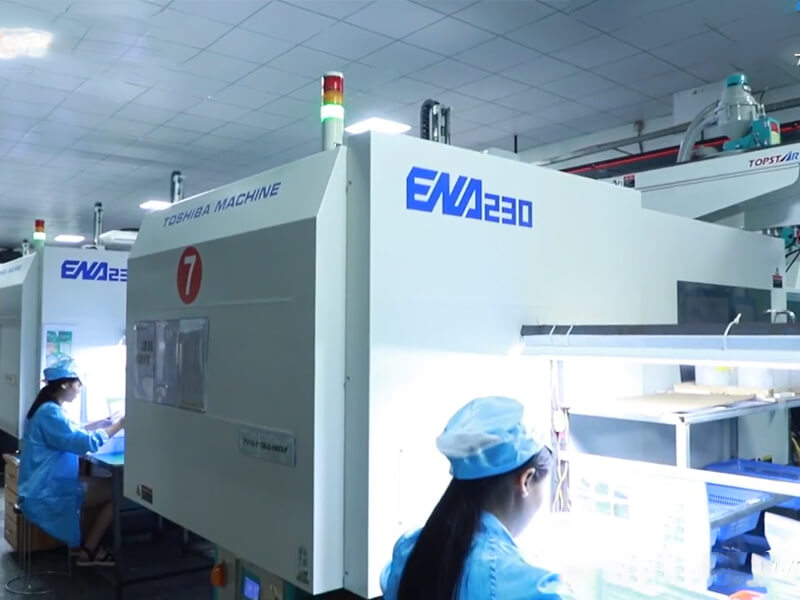
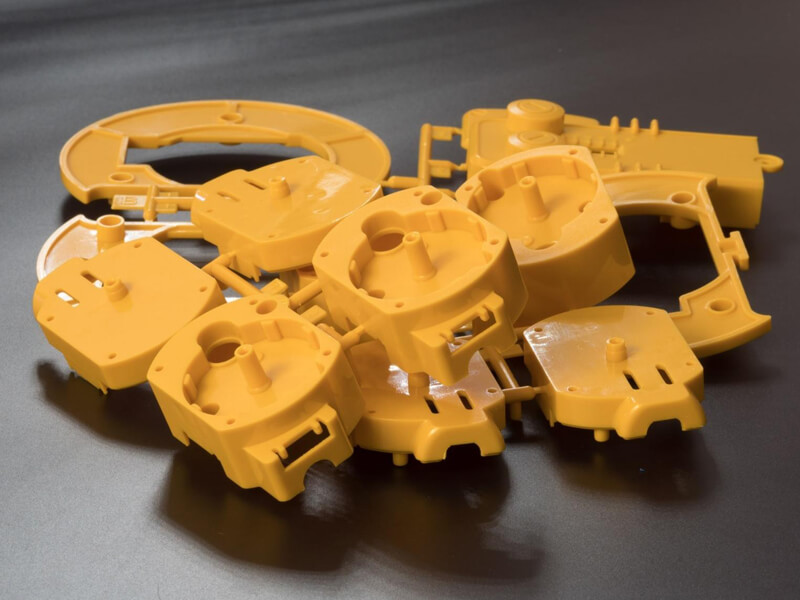
Get a free quote and design analysis today.
We’ll reply to you within 6 working hours.
We respect your privacy.
+86 139 2927 4777 (WhatsApp, Wechat)

